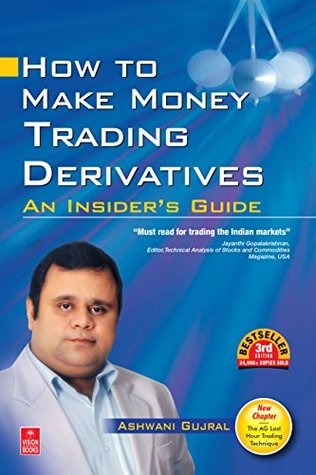How to Make Money Trading Derivatives: An Insider’s Guide by Ashwani Gujral

Chapter 1
The Indian Equity and Derivative Markets
When I began writing the first chapter of this book early in 2004, India
appeared to be making rapid economic strides. The economy was being
systematically unshackled and customs duties were being reduced to allow
all comers freer access to the Indian consumer. Politicians were heard
saying that they wanted to create a level playing field rather than thinking
of protectionist ways. India was becoming the most favoured destination of
outsourcing, from services to manufactured products. “Made in India” was
slowly becoming a brand rather than a liability. A good monsoon ensured
that agricultural growth was robust and rural incomes were on the rise.
Interest rates stood at their lowest levels ever and the government was
taking steps to reduce the fiscal deficit. On the geopolitical front, peace
talks with Pakistan seemed ready to start.
Scarcely three months later, results of the 2004 Indian general election
led to the unexpected fall of the Vajpayee-led NDA government, and
everything seemed to change overnight. A new Left-supported dispensation
was widely perceived set to reverse some deregulatory policies and slow
others down. A nervous Indian stock market lost $22 billion in a single day
— its fourth largest-ever one-day debacle.
Real-life often outdoes fiction in surprises, a lesson every trader needs
to keep in mind.
The Indian Stock Market
India now has several home-grown multinationals listed on the stock
market which have brought laurels to the country. India’s stock markets
have also made several structural changes to improve their security and
efficacy. The days of Harshad Mehta and Ketan Parikh are over as the cash
and derivative segments of the market have been separated. Today,
investors not only have equity shares but also their derivatives, such as
futures and options, to hedge risk and trade. So from a situation where only
a linear product was available till the 1990s, today there exist the new nonlinear
derivative products as well.
When trading derivatives, you are generally dealing with big stocks and
these have the required fundamentals in place. They are unlikely to have
abrupt shareholder-unfriendly moves. Smaller stocks which have limited
institutional holdings are more prone to abrupt moves which cannot be
explained either technically or fundamentally.
Myths About the Indian Stock Market
At this point it is pertinent for me to dispel some fears about the Indian
stock market that new traders and investors may have based on past events.
It is important to do so because all equity futures and options are derivatives
either of stocks, or market indices; and are thus a part and parcel of trading
in the stock market.
The Indian Market Can Have a Scam at Any Time
Indian investors and traders who have been in the market since 1990 have
had to face a scam at some time or another. Actually, most of these were not
stock market scams. Rather, they were scams in other financial institutions,
but it was easier and more sensational to blame them on the stock market.
In both Harshad Mehta and Ketan Parikh scams, financial institutions
violated RBI guidelines to lend money to both these gentlemen which they
used to inflate stock prices. Could charts have saved traders and investors
from these scams? Absolutely. I believe most traders who followed charts
did not get badly hurt because they had stop losses in place and it was clear
that stocks were getting distributed.
In fact, nimble traders even made money by selling short in the ensuing
bear market. Most bull markets worldwide end with scams. I look at it as
footing the bill for the party that happens before the scam. The key is to
How to Make Money Trading Derivatives: An Insider’s Guide by Ashwani Gujral




